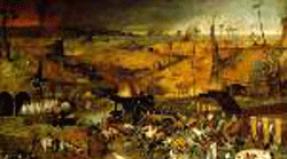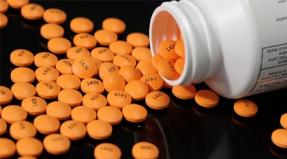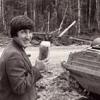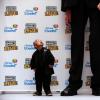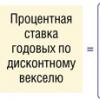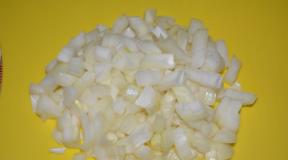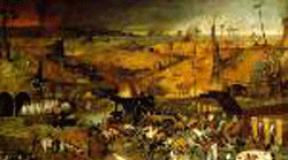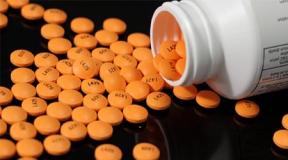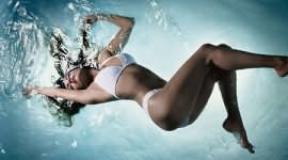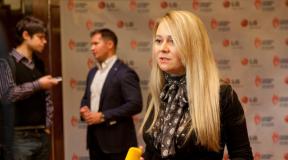Anatomy of domestic animals. Myology. Features of muscle tissue According to shape and structure
The complex phylogenetic development of the muscles of the trunk, neck and head is due to the fact that they originate from two primordia: one part is the own muscles of the trunk, the other is laid in the lateral plates related to the intestinal muscles associated with the mesenchyme of the gill apparatus.
For a more correct representation of the evolution of muscles, let’s look at their rudiments.
Phylogeny of the trunk muscles. Lower vertebrates, like the lancelet, have paired muscles located on the sides of the body. The lateral muscles, with the help of a horizontal lateral connective tissue septum, are divided into dorsal and abdominal sections (Fig. 186). Each myomere is separated from the adjacent one by a vertical connective tissue septum (myoseptum); these partitions are located transversely to the body. The vertical partitions in the area of the lateral horizontal connective tissue partition bend and form an angle facing forward. The upper (dorsal) and lower (ventral) ends of the myomeres also bend forward. The result is a broken line between the myotomes, similar to a figure where the angle located on the lateral connective tissue groove is turned forward. All the dorsal muscles of lower vertebrates are built in the form of such cones. But already in some fish differentiation is noted in the position and direction of the myotomes. In the lateral wall of the abdomen, some of the myotomes are located obliquely to the sagittal plane at different depths. This shows that in aquatic animals the first signs of restructuring of the myotomes appear, which in terrestrial vertebrates turn into the lateral oblique muscles of the abdomen. In the middle of the abdomen, part of the myotomes is transformed into the rectus abdominis muscle.
The dorsal muscles of terrestrial vertebrates are adapted to the displacement of individual body segments, since the myotomes extend through those joints where movement occurs. In amphibians, the back muscles are also built from independent myotomes and resemble the muscles of lower vertebrates. Only in reptiles is there a disappearance of the horizontal connective tissue septum and an erasure of the boundary between the dorsal and ventral muscles. Due to increased mobility of the spine and chest, some of the myotomes merge into larger muscles. This is how mm arise. interspinales, intertransversales, transversospinales, longissimus, iliocostalis and occipitovertebral group. This led to the fact that in higher vertebrates, including humans, primary myotomes remained only in the form of short muscles mm. rotatores, connecting sequentially segments of the body (vertebrae).
186. Superficial abdominal muscles of the newt (according to Maurer).
1 - hypobranchial muscle: 2 - intermuscular septum; 3 - m. obliquus externus superficialis; 4 - m. rectus interims; 5 - m. rectus superficialis.
The abdominal muscles of lower amphibians still retain division in the form of separate myotomes (Fig. 186), but in the middle there are longitudinal myotomes, fused into the rectus abdominis muscle. In the lateral walls, the myotomes change direction, but do not yet form independent muscle layers. In higher vertebrates, the myosepta disappear and the myotomes merge with each other into large muscle layers arranged in three layers. These muscle layers in humans are represented by three lateral muscles. Only in the rectus abdominis muscle in all animals is primary segmentation preserved in the form of tendon bridges intersectiones tendineae.
In the thoracic region, ribs grow along the connective tissue septa between the myotomes, and in the intercostal spaces there are intercostal muscles, representing a continuation of the abdominal myotomes. On the ventral side in marsupials m. pyramidalis reaches the sternum. In mammals, this muscle is preserved as a rudiment.
Phylogeny of visceral muscles. In lower vertebrates, the anterior section of the intestine is formed by annular fibers covering the entire visceral apparatus in the form of a general compressor. Starting with cyclostomes and selyachia, deep muscle bundles come into contact with visceral arches, which are covered from the outside by lateral muscles pierced by gill openings. In the muscle mass, there is a separation of individual muscles: the muscle that lifts the palatoquadrate cartilage (innervated by the V pair of cranial nerves) is attached to the upper section of the first branchial arch; the muscle that adducts the lower part of the second branchial arch (innervated by the V pair of cranial nerves) is attached to the lower section; premaxillary muscle, lying between the branches of the lower jaw (innervated by the V and VII pairs of cranial nerves). On the dorsal side behind the gill slits, the posterior part of the common constrictor is separated in m. trapezius.
Starting with amphibians, due to the fixation of the upper jaw to the skull, the muscles of the visceral apparatus are transformed. The levator palatoquadrate muscle in amphibians is transformed into the levator oculi muscle, which is reduced in higher animals. The muscles of mastication are formed from the adductor mandible muscle.
The premaxillary muscle in amphibians and reptiles retains its position, and in higher animals it turns into the geniohyoid muscle. A bundle is separated from the premaxillary muscle to form the anterior belly of the digastric muscle. All these muscles are innervated by the V pair of cranial nerves.
Aquatic animals have muscles that are innervated by the VII cranial nerve. This includes the muscle that depresses the mandible, which in mammals turns into the posterior belly of the digastric muscle (innervated by the VII pair of cranial nerves).
In reptiles, the constrictor cervicalis (innervated by the VII cranial nerve) reaches significant development, which in mammals is divided into superficial and deep parts. The muscles of the perioral fissure develop from the deep part, and the rest of the facial muscles are formed from the superficial part (innervated by the VII pair of cranial nerves).
The muscles associated with the branchial apparatus, with the loss of the branchial type of breathing, are transformed into the muscles of the larynx, pharynx and sublingual. The trapezius muscle loses its connection with the branchial arches and moves to the shoulder girdle. The sternocleidomastoid muscle is split off from its anterior edge.
In fish and terrestrial vertebrates, the hyoid muscles develop from the abdominal processes of the occipital myotomes, which wrap around the branchial apparatus behind and are located on the ventral side under the visceral apparatus. From the rectus abdominis muscle in amphibians and other more highly organized animals, the muscles of the tongue, hyoid and muscles lying below the hyoid bone develop.
Biology course
Lesson 1. Phylogenesis of the musculoskeletal and nervous systems
Phylogeny and evolutionary tree:
Features of the organization:
Symmetry
Lack of symmetry (amoebas, some sporozoans)
Sphericality (some radiolarians, coccidia)
Radial symmetry
Helical symmetry
Bilateral symmetry
Primary and deuterostome
Body cavity

Veils
Functions of the body
1. Protection from mechanical, physical and chemical influences.
2. Barrier - a barrier to the penetration of bacteria and other microorganisms.
3. Heat exchange between the body and the environment.
4. Thermal insulation (skin, hair, feathers).
5. Participation in the regulation of the body’s water balance.
6. Participation in the removal of end products of metabolism (exocrine function).
7. Participation in gas exchange (absorption of O2 and release of CO2).
8. Metabolic function (storage of energy material, formation of vitamin D, milk).
9. Important role in intraspecific relationships: species-specific coloration of integument; chemocommunication (language of smells).
10. Passive protection: adaptive coloration ensures the adaptation of the organism to its environment.
Direction of integument evolution
Worms:
ciliated epithelium → squamous epithelium
Evolution of body integument in invertebrate animals
covers
muscles
Coelenterates
ectoderm with skin-muscle, nerve and stinging cells
Flat ciliated worms (turbellaria)
skin-muscle bag:
single-layer ciliated epithelium with unicellular mucous glands
(+ rhabdid cells),
three layers of smooth muscle:
ring
diagonal
longitudinal
Dorsoventral
Skin-muscle bag:
tegument (syncytial epithelium)
three layers of smooth muscle:
ring
diagonal
longitudinal
Roundworms
Skin-muscle bag:
multilayer cuticle
syncytial hypodermis
longitudinal smooth muscle
Annelids
Skin-muscle bag:
thin cuticle
single layer epithelium with setae and glands
two layers of smooth muscle:
ring
longitudinal
Shellfish
Skin-muscle bag:
single-layer epithelium (+ calcareous shell)
connective tissue layer (in cephalopods)
bundles of smooth muscles (in cephalopods - striated muscles)
Arthropods
hypodermis from single-layer epithelium,
multilayer cuticle made of chitin.
chitin m.b. impregnated with carbonated lime (in crustaceans and centipedes) or encrusted with tanned proteins (arachnids, insects).
individual bundles of striated muscles
Evolutionary transformations of chordate integuments
1. Differentiation of integument:
Single-layer columnar epithelium → stratified squamous keratinizing epithelium;
Development of the dermis due to the proliferation of connective tissue;
2. Formation of specialized skin derivatives;
3. Formation of multicellular glands.
covers
skin glands
Cephalochordates
a thin layer of connective tissue (corium);
single layer columnar epithelium;
mucopolysaccharide cuticle
unicellular
Fish
bone scales of mesodermal origin;
multi-layered slightly keratinized epidermis;
dermis
unicellular
Amphibians
multi-layered epidermis (in some, keratinizing);
the dermis is thin, rich in capillaries;
lymphatic cavities
numerous multicellular
glands
Reptiles
the dermis (corium) can bear bony plates (max - turtle shell);
multi-layered keratinizing epidermis forms horny scales;
the skin fits tightly to the muscles
The excretory function of the skin is minimal:
single scent glands, secretion of water by the skin in crocodiles
Mammals
multilayer keratinizing epidermis;
dermis;
subcutaneous fat;
hair and other derivatives of the epidermis
various multicellular glands
Evolution of fish scales:
placoid → cosmoid → ganoid

Fish scales:
1 - Placodal; 2 - ganoid; 3 - ctenoid; 4 - cycloid
scales
structure
compound
belonging
placoid
jagged plates, with apex directed backwards;
has a cavity filled with pulp, with blood vessels and nerve endings
osteodentin; surface covered with enamel
class Cartilaginous fish
cosmoid
thick plates of round or rhombic shape form a continuous covering of dermal teeth
bone, covered with modified dentin - cosmin
lobe-finned (litimeria, etc.)
ganoid
thick rhombic scutes covering certain areas of the body
bone base covered with modified dentin - ganoin
fossil Paleonyx, Sturgeon
cycloid
thin rounded translucent plates with a smooth outer edge; there are annual rings
bone
bony fish
ctenoid
thin rounded translucent plates with a jagged posterior edge; arranged in a tiled manner;
there are annual rings
bone
bony fish (perciformes, etc.)
One species of fish can have both types of scales: male flounder have ctenoid scales, and females have cycloid scales.

Scales of bony fish: A - ctenoid scales of perch, B - cycloid scales of roach (1 - annual rings)

Determining the age of fish by growth rings.

Longitudinal section of lizard skin :
1 - epidermis, 2 - skin proper (corium), 3 - stratum corneum, 4 - malpighian layer, 5 - pigment cells, 6 - cutaneous ossifications


Tegument of flatworms: a – turbellarian; b – trematodes; c – cestodes
Mammal hair
Evolution of mammalian hair:
horny scales → scalp → partial reduction of scalp

Hair arrangement in mammals:
a - on the tail of rodents; b - on other parts of the body; 1 - horny scales; 2 - groups of hair arranged in a checkerboard pattern.
Mammal hair:
Typical (thermoregulation)
Vibrissae (touch)
Functions of hair in the evolution of mammals:
from touch (vibrissae throughout the body in marsupials and oviparous animals) → to thermoregulation (with an increase in hair density)
In the evolution of primates, the sense of touch moves from the whiskers to the skin of the palms.
During human ontogenesis, a larger number of hair buds are formed, but by the end of embryogenesis, a reduction of most of them occurs.
Features of the development of the skin glands of mammals:
1. The sweat glands of mammals are homologous to the skin glands of amphibians.
2. In mammals, the mammary glands are homologous to the sweat glands (in oviparous animals, the mammary glands are similar to the sweat glands in structure and development).
3. The number of mammary glands and nipples correlates with fertility.

The structure of the developing mammalian nipple: gradual transition from sweat (1) to mammary (2) glands.

The formation and development of the mammary glands in the human embryo: a - embryo at the age of 5 weeks (the mammary lines are visible); b - differentiation of five pairs of nipples; c - embryo at the age of 7 weeks.
Phylogenetically determined malformations of the integument in humans:
1. Absence of sweat glands (anhidrotic dysplasia).
2. Excessive skin hair growth (hypertrichosis).
3. Polythelia (polythelia).
4. Increased number of mammary glands (polymasty).
Phylogeny of the musculoskeletal system

Chord
Chord -axial skeleton, built from highly vacuolated cells, tightly adjacent to each other and covered on the outside with elastic and fibrous membranes.
The elasticity of the chord is given by the turgor pressure of its cells and the strength of the membranes.

Chord function:
Support;
Morphogenetic: carries out embryonic induction.
Chord persists throughout life:
In some tunicates (appendiculars);
In skullless (lancelet);
In cyclostomes (lamreys and hagfish);
In chimeraformes, cartilaginous ganoids (sturgeons, etc.) and lungfishes.

Neg. Chimeraformes (Class Cartilaginous fishes)
Rudiments of the notochord in higher vertebrates:
In fish: between the vertebral bodies;
In amphibians: inside the vertebrae;
In mammals: they form the nucleus pulposus of intervertebral cartilage (discs).
cervical
chest
lumbar
sacral
tail
fish
trunk
amphibians
1
(head mobility)
trunk
1
(support for hind limbs)
reptiles
2
mammals
7
5 - 10
Ribs
Functions of ribs:
Stable body shape (in fish);
Support for locomotor muscles (serpentine movement of fish, tailed amphibians and reptiles);
Attachment of respiratory muscles;
Protection of the chest organs.
presence and location of ribs
presence of a chest
fish
ribs on all vertebrae except caudal;
function: movement
-
tailed amphibians
short upper ribs on the trunk vertebrae;
function: movement
-
tailless amphibians
-
-
reptiles
ribs on the thoracic and lumbar vertebrae;
function: movement and breathing
+
mammals
ribs on the thoracic vertebrae; function: breathing
+
Features of the development of the human axial skeleton:
The ontogeny of the human axial skeleton repeats the main phylogenetic stages of its formation!!!
1. Chord→ cartilaginous spine→ bony spine.
2. Development of paired ribs on the cervical, thoracic and lumbar vertebrae→ reduction of cervical and lumbar ribs→ fusion of the thoracic ribs in front with each other and with the sternum: formation of the rib cage.

Violation of reduction of cervical ribs in humans
8.
Formation of vertebrae in phylogeny:
1. Replacement of the notochord shell with cartilage (in cartilaginous fish).
2. Proliferation of the bases of the vertebral arches: formation of the vertebral bodies.
3. Fusion of the upper vertebral arches above the neural tube: the formation of the spinous processes and the spinal canal, which encloses the neural tube.
4. The appearance of ossification zones in the upper arches and vertebral bodies.

Development of vertebrae in vertebrates: a - early stage; b - subsequent stage;
1 - chord; 2 - chord shell; 3 - upper and lower vertebral arches; 4 - spinous process; 5 - zones of ossification; 6 - rudiment of chord; 7 - cartilaginous vertebral body;
Advantages of the vertebral column over the notochord:
More reliable support for muscle attachment:
Increase in body size
Increased physical activity
The main direction of evolution of the spinal column:
Replacing cartilage tissue with bone tissue (starting with bony fish);
Differentiation of the spinal column into sections.
Differentiation of the spinal column into sections
cervical
chest
lumbar
sacral
tail
fish
trunk
amphibians
1
(head mobility)
trunk
1
(support for hind limbs)
reptiles
2
mammals
7
5 - 10
Head skeleton:
Axial skull: protection of the brain and sensory organs.
Visceral skull: support for the pharyngeal muscles.
3 stages of phylogeny of the axial skull:
1. leathery (cyclostomes)
2. cartilaginous (bony fish)
3. bony (bony fish and other vertebrates)
2 types of ossification of the axial skull:
- replacement (at the base of the skull)
- overlay of integumentary bones (in the upper part)
Anomalies in the development of the human skull
1.
 2.
2.

1. Metopic suture between the frontal bones
2. Interparietal bone, or Inca bone, and transverse occipital suture.
Phylogeny of the visceral skull
Cartilaginous arches of the visceral skull of fish:
I - jaw arch
palatoquadrate cartilage (primary maxilla)
Meckel's cartilage (primary mandible)
II - hyoid arch
Hyamandibular cartilage (role of suspension to the axial skull)
hyoid
III - VII - gill arches

Origin and structure of the vertebrate visceral skull:
I - development of the anterior gill arches from a hypothetical ancestor to modern cartilaginous fish;
II - evolution of the first two visceral gill arches of vertebrates (homologous formations are indicated by appropriate shading);
a - cartilaginous fish (hyastyle mouth ap.);
b - amphibian (autostyle mouth. ap.);
c - reptile (autostyle mouth. ap.);
g - mammal:
1 - palatoquadrate cartilage; 2 - Meckel's cartilage; 3 - hyomandibular cartilage; 4 - hyoid; 5 - column; 6 - false bones of the secondary jaws; 7 - anvil; 8 - stirrup; 9 - hammer.
Limb skeleton

Formation of paired limbs from symmetrical metapleural folds

Acanthodia Climatius
The main trends in the evolution of paired limbs from fish to terrestrial tetrapods:
1. Reduction in the number and enlargement of the proximal limbs.
2. Reduction in the number of fin rays in the distal region.
3. Increased mobility of the connection between the limbs and the belts.
Scheme of the evolution of limbs during the transition from fish to tetrapods


Lobe-finned fish eusthenopteron:
a - reconstruction of appearance; b - skeleton; c - forelimb (sarcopterygia)

Tiktaalik - a possible transitional link from lobe-finned fishes to terrestrial tetrapods

Skeleton of the forelimb of a lobe-finned fish (a), its base (b) and the skeleton of the forepaw of a stegocephalus (c):
1 - humerus; 2 - ulna; 3 - radius

Ichthyostega - a dead-end branch of evolution
The main trends in the evolution of the limbs of terrestrial tetrapods:
1. Increased mobility of bone joints;
2. Reduction in the number of bones in the wrist, first to three rows in amphibians, then to two in reptiles and mammals;
3. Reducing the number of phalanges of the fingers;
4. Lengthening the proximal parts of the limb and shortening the distal ones (foot).
5. Morpho-functional differentiation of limbs (including reduction)
Phylogeny of the nervous system
The nervous system of all animals is of ectodermal origin!
Evolution of the animal nervous system
Diffuse nervous system of coelenterates
Scalene nervous system (orthogonal) of flatworms and roundworms
Diffuse nodular nervous system of mollusks
Ventral nerve cord of annelids and arthropods
Neural tube of chordates

Types of structure of the nervous system of invertebrates
Embryonic development of the nervous system

Stages of embryogenesis of the nervous system in a cross-sectional schematic section:
a - neural plate; b, c - neural groove; d, e - neural tube; 1 - epidermis; 2 - ganglion plate
Neural tube cells differentiate into neurons and neuroglia.

Neural tube of the lancelet: 1 - neurocoel; 2 - eyes of Hesse
Anterior neural tube → brain and sensory organs
Posterior neural tube → spinal cord and ganglia
Cephalization - the process of brain formation.
Meaning of cephalization:
1. More effective analysis of irritations with increasing motor activity;
2. Differentiation of sense organs; coevolution of sense organs and brain.
Stage of three brain vesicles and connections with the receptor apparatus:
anterior - olfactory receptors
medium - visual receptors
posterior - auditory receptors and vestibular apparatus

Diagram of the neural tube in the three brain vesicle stage

Neurocoel - the common cavity in the neural tube is differentiated:
spinal canal (in the spinal cord)
ventricles (in the brain)
Evolution of the vertebrate brain

Evolution of the vertebrate brain:
A - fish; B - amphibian; B - reptile; G - bird; D - mammal;
1 - olfactory lobes; 2 - telencephalon; 3 - diencephalon; 4 - midbrain; 5 - cerebellum; 6 - medulla oblongata
In fish:
1. All parts of the brain are located in the same plane (in sharks there is a bend in the midbrain area).
3. The cerebellum is well developed.
In amphibians:
1. All parts of the brain are located in the same plane.
2. The midbrain is the most developed - the highest center for the integration of functions (ichthyopsid type of brain).
3. The forebrain is large and divided into hemispheres.
4. The cerebellum is poorly developed.
In reptiles:
1. All parts of the brain achieve more progressive development. The ability to form conditioned reflexes increases.
2. The increase in the size of the forebrain occurs mainly due to the striatal bodies lying in the region of the bottom of the ventricles. They also act as a higher integrative center (sauropsid type of brain)
3. The rudiments of the cortex appear.
4. The cerebellum is poorly developed, but better than in amphibians.
5. The medulla oblongata forms a sharp bend in the vertical plane, characteristic of higher vertebrates.
In birds:
1. The size of the telencephalon increases due to the growth of the striatum (sauropsid type of brain).
2. The olfactory lobes decrease.
3. The cerebellum is well developed; there is bark.
4. The visual center of the midbrain is well developed.
5. The bend is maintained.
In mammals:
1. The size of the telencephalon greatly increases due to an increase in the cerebral cortex; the cerebral cortex is the highest integration center (mammal type of brain).
2. The hypothalamus of the diencephalon is the center of neurohumoral regulation of the autonomic functions of the body.
3. The cerebellum is highly developed and has a more complex structure; consists of hemispheres and is covered with a bark. The development of the cerebellum allows for complex forms of motor coordination.
4. The bend is maintained.

Relative sizes of the telencephalon:
1 - in fish; 2 - at the frog; 3 - for a snake; 4 - dove; 5 - in a dog; 6 - in humans

Skeleton of the forelimb of terrestrial vertebrates:
a - frog; b - salamander; c - crocodile; g - bat; d - person;
1 - humerus; 2 - radius; 3 - carpal bones; 4 - metacarpal bones; 5 - phalanges of fingers; 6 - ulna
Common features in the development of limbs of terrestrial vertebrates:
- laying of limb rudiments in the form of poorly differentiated folds;
- the formation in the hand and foot initially of 6-7 finger rudiments, the outermost of which are soon reduced and only five subsequently develop.
Structure of a developing vertebrate limb

Lateral polydactyly in humans

Rare forms of polydactyly in humans:
a - axial (the arrow shows the additional middle finger);
b - polydactyly, accompanied by isodactyly on the lower extremities
Polydactyly is a sign of purebredness in some dog breeds, for example in the Briard, Nenets Laika, Beauceron (French Shepherd), Pyrenean Mastiff, etc.


Polydactyly in the Beauceron and the Pyrenees Mountain Dog (X-ray)
In the phylogenesis of chordates, the muscular system successively passes through a number of stages.
At the lancelet it is represented by a steam room longitudinal muscle(right and left), which runs along the body and is divided by connective tissue septa (myosepta) into short straight muscle bundles (myomeres). This (segmental) division of a single muscle layer is called metamerism.
With increased mobility, separation of the head and development of the limbs (in the form of fins) in fish the longitudinal muscle is divided by the horizontal septum into dorsal and ventral muscles, as well as isolation of the muscles of the head, body, tail and fins.
With access to land and an increase in the variety of movements in amphibians and reptiles the dorsal muscle, as well as the ventral one, is divided into two cords: lateral (transverse costalis muscle) and medial (transverse spinous muscle). In addition, in reptiles, subcutaneous muscles, which attach to the skin, first appear from the lateral cord.
In more highly organized animals ( birds and mammals) further differentiation of the muscular system occurs : lateral and medial cords, each of them is divided into two layers (superficial and deep). In addition, a diaphragm appears for the first time in mammals.
Phylogeny of the muscular system.
In ontogenesis, the muscular system mainly develops from the myotomes of the mesoderm, with the exception of some muscles of the head and neck, which are formed from the mesenchyme (trapezius, brachiocephalic).
At the beginning, a muscular longitudinal cord is formed, which immediately differentiates into dorsal and ventral layers; further, each of them is divided into lateral and medial layers, which, in turn, are differentiated into superficial and deep layers, the latter giving rise to certain muscle groups. For example, the iliocostal muscles develop from the superficial layer of the lateral layer, and the longissimus muscles of the back, neck, and head develop from the deep layer of the lateral layer.
3. Subcutaneous muscles – musculi cutanei
Subcutaneous muscles are attached to the skin, fascia and have no connection with the skeleton. Their contractions cause the skin to twitch and allow it to gather into small folds. These muscles include:
1) Subcutaneous muscle of the neck – m. Cutaneus colli (especially highly developed in dogs). It runs along the neck, closer to its ventral surface and passes to the facial surface to the muscles of the mouth and lower lip.
2) Subcutaneous muscle of the scapula and shoulder (scapulohumeral) – m. Cutaneus omobrachialis. It covers the area of the shoulder blade and part of the shoulder. Well expressed in horses and cattle.
3) Subcutaneous muscle of the trunk – m. Cutaneus trunci. It is located on the sides of the chest and abdominal walls and gives off bundles caudally into the knee fold.
4) In females, in the area of the mammary glands there are cranial and caudal muscles of the mammary gland (mm. Supramammilaris cranialis et caudalis), which give folding to the skin and help remove milk. Highly developed in carnivorous animals.
Males in this area have cranial and caudal preputial muscles (mm.preputialis cranialis et caudalis), which ensure the folding of the prepuce and act as its sphincter.
Skeletal muscles
Skeletal muscles are the active part of the musculoskeletal system. It consists of skeletal muscles and their auxiliary devices, which include fascia, bursae, synovial tendon sheaths, pulleys, and sesame bones.
In the body of an animal there are about 500 skeletal muscles. Most of them are arous and are located symmetrically on both sides of the animal’s body. Their total mass is 38-42% for a horse of body weight, in cattle 42-47%, in pigs 30-35% of body weight.
The muscles in the animal’s body are not located randomly, but in a regular manner, depending on the effect of the animal’s gravity and the work performed. They exert their effect on those parts of the skeleton that are movably connected, i.e. muscles act on joints and syndesmoses.
The main places of muscle attachment are bones, but sometimes they are attached to cartilage, ligaments, fascia, and skin. They cover the skeleton so that the bones only in some places lie directly under the skin. Fixed on the skeleton, as on a system of levers, the muscles, when contracted, cause various movements of the body, fix the skeleton in a certain position and give shape to the animal’s body.
The main functions of skeletal muscles:
1) The main function of muscles is dynamic. When contracting, the muscle shortens by 20-50% of its length and thereby changes the position of the bones associated with it. Work is performed, the result of which is movement.
2) Another muscle function - static. It manifests itself in fixing the body in a certain position, in maintaining the shape of the body and its parts. One of the manifestations of this function is the ability to sleep standing (horse).
3) Participation in metabolism and energy. Skeletal muscles are “heat sources” because when they contract, about 70% of the energy is converted into heat and only 30% of the energy provides movement. Skeletal muscles hold about 70% of the body's water, which is why they are also called “water sources.” In addition, adipose tissue can accumulate between muscle bundles and inside them (especially during fattening pigs).
4) At the same time, during their work, skeletal muscles help the heart function by pushing venous blood through the vessels. In experiments, it was possible to find out that skeletal muscles act like a pump, ensuring the movement of blood through the venous bed. Therefore, skeletal muscles are also called “peripheral muscle hearts.”
The structure of muscle as an organ
The structure of muscle from a biochemist's point of view
Skeletal muscle is composed of organic and inorganic compounds. Inorganic compounds include water and mineral salts (calcium, phosphorus, magnesium salts). Organic matter is mainly represented by proteins, carbohydrates (glycogen), lipids (phosphatides, cholesterol).
Table 2.
Chemical composition of skeletal muscle
The chemical composition of skeletal muscles is subject to significant age-related and, to a lesser extent, species, breed and gender differences, which is primarily due to the unequal water content in them (% of water decreases with age).
Somatic and visceral muscular system, its phylo-ontogenesis. Subcutaneous muscles. Skeletal muscles. The structure of muscle as an organ. Classification of muscles. Assistive devices of muscles.
Myology(Myologia) is a branch of domestic animal anatomy that studies the structure of the muscular system. Muscle tissue, which forms the basis of this system, carries out all motor processes in the animal body. Thanks to it, the body is fixed in a certain position and moves in space, respiratory movements of the chest and diaphragm, eye movement, swallowing, and motor functions of internal organs, including the work of the heart, are carried out.
Muscle has special contractile organelles - myofibrils . myofibrils, consisting of thin protein filaments (myofilaments), they can be unstriated or striated (cross-striped). Accordingly, a distinction is made between unstriated and striated muscle tissue.
1) Non-striated muscle tissue consists of spindle-shaped cells (smooth myocytes). These cells form muscle layers in the walls of blood and lymphatic vessels, in the walls of internal organs (stomach, intestines, urinary tract, uterus, etc.). The length of the cells ranges from 20 µm (in the wall of a blood vessel) to 500 µm (in the wall of the uterus of a pregnant cow), diameter from 2 to 20 µm. In functional terms, non-striated muscle tissue has a number of features: it has great strength (for example, significant masses of food are constantly moving in the intestines), has low fatigue, slow contraction and rhythmic movements (in the intestinal wall, non-striated muscle tissue contracts 12 times per minute, and in spleen - only 1 time).
2) Striated muscle tissue is characterized by the presence of striated myofibrils and has 2 types.
A) Striated cardiac muscle tissue consists of elongated cells (cardiomyocytes) square shape. Their ends, connecting with each other in chains, form the so-called functional muscle “fibers” with a thickness of 10-20 microns. Closely interconnected, functional muscle “fibers” form the muscular layer of the heart ( myocardium), constant and rhythmic contractions of which set the blood in motion.
B) Striated skeletal muscle tissue, unlike cardiac tissue, does not consist of cells, but of multinucleated muscle formations (myosymplasts) of a cylindrical shape. The length of myosymplasts ranges from a few millimeters to 13-15 cm, diameter from 10 to 150 microns. The number of cores in them can reach several tens of thousands. Myosymplasts (they are also called “muscle fibers”) form skeletal muscles and are part of some organs (tongue, pharynx, larynx, esophagus, etc.). Functionally, skeletal muscle tissue is easily excitable and contracts faster than non-striated muscle tissue (for example, under normal conditions, skeletal muscle contracts within 0.1 s, and non-striated muscle within several seconds). But, unlike the smooth (non-striated) muscles of internal organs, skeletal muscles fatigue faster.
Muscular system Depending on the structural features, the nature of the motor function and innervation, they are divided into somatic and visceral.
Somatic muscular system makes up 40% of body weight and is built from myosymplasts. It is voluntary and innervated by the somatic nervous system. Somatic muscles contract quickly and energetically, but short-term and quickly fatigue. This type of contraction is called tetanic and it is characteristic of somatic muscles. These include:
1) subcutaneous muscles, which have no connection with the skeleton and are attached to the skin; their contractions cause the skin to twitch and allow it to gather into small folds;
2) skeletal muscles, which are attached to the skeleton;
3) diaphragm - a dome-shaped muscle that separates the chest cavity from the abdominal cavity;
4) muscles of the tongue, pharynx, larynx, auricle, eyeball, middle ear, esophagus and external reproductive organs.
Visceral muscular system makes up 8% of body weight and is built from smooth myocytes. It is involuntary and innervated by the autonomic nervous system. Smooth muscles contract slowly, for a long time and do not require a large amount of energy. This type of contraction is called tonic and it is characteristic of visceral muscles, which form muscle bundles, layers and membranes of internal organs.
Phylo-ontogenesis of the muscular system
In the phylogenesis of chordates, the muscular system successively passes through a number of stages.
At the lancelet it is represented by paired longitudinal muscles (right and left), which run along the body and are divided by connective tissue septa (myosepta) into short straight muscle bundles (myomeres). This (segmental) division of a single muscle layer is called metamerism.
With increased mobility, separation of the head and development of the limbs (in the form of fins) in fish the longitudinal muscle is divided by the horizontal septum into the dorsal and ventral muscles, as well as
Isolation of the muscles of the head, body, tail and fins.
With access to land and an increase in the variety of movements in amphibians and reptiles the dorsal muscle, as well as the ventral one, is divided into two cords: lateral (transverse costal muscle) and medial (transverse spinous muscle). In addition, in reptiles, subcutaneous muscles, which attach to the skin, first appear from the lateral cord.
In more highly organized animals ( birds and mammals) further differentiation of the muscular system occurs: the lateral and medial cords, each of them, are divided into two layers (superficial and deep). In addition, a diaphragm appears for the first time in mammals.
Phylogeny of the muscular system.
| Chordata | Muscular system | |||||||
| Lancelet | Longitudinal muscle | |||||||
| Fish | Dorsal | Ventral | ||||||
| Amphibians, reptiles | Lateral | Medial | Lateral | Medial | ||||
| Birds, mammals | Power | Deep | P | G | P | G | P | G |
In ontogenesis, the muscular system mainly develops from the myotomes of the mesoderm, with the exception of some muscles of the head and neck, which are formed from the mesenchyme (trapezius, brachiocephalic).
At the beginning, a muscular longitudinal cord is formed, which immediately differentiates into dorsal and ventral layers; further, each of them is divided into lateral and medial layers, which, in turn, are differentiated into superficial and deep layers, the latter giving rise to certain muscle groups. For example, the iliocostal muscles develop from the superficial layer of the lateral layer, and the longissimus muscles of the back, neck, and head develop from the deep layer of the lateral layer.
Subcutaneous muscles – musculi cutanei
Subcutaneous muscles are attached to the skin, fascia and have no connection with the skeleton. Their contractions cause the skin to twitch and allow it to gather into small folds. These muscles include:
1) Subcutaneous muscle of the neck – m. Cutaneus colli (especially highly developed in dogs). It runs along the neck, closer to its ventral surface and passes to the facial surface to the muscles of the mouth and lower lip.
2) Subcutaneous muscle of the scapula and shoulder (scapulohumeral) – m. Cutaneus omobrachialis. It covers the area of the shoulder blade and part of the shoulder. Well expressed in horses and cattle.
3) Subcutaneous muscle of the trunk – m. Cutaneus trunci. It is located on the sides of the chest and abdominal walls and gives off bundles caudally into the knee fold.
4) In females, in the area of the mammary glands there are cranial and caudal muscles of the mammary gland (mm. Supramammilaris cranialis et caudalis), which give folding to the skin and help remove milk. Highly developed in carnivorous animals.
Males in this area have cranial and caudal preputial muscles (mm.preputialis cranialis et caudalis), which ensure the folding of the prepuce and act as its sphincter.
Skeletal muscles
Skeletal muscles are the active part of the musculoskeletal system. It consists of skeletal muscles and their auxiliary devices, which include fascia, bursae, synovial tendon sheaths, pulleys, and sesame bones.
There are about 500 skeletal muscles in the animal's body. Most of them are paired and are located symmetrically on both sides of the animal’s body. Their total mass is 38-42% of body weight in horses, 42-47% in cattle, and 30-35% of body weight in pigs.
The muscles in the animal’s body are not located randomly, but in a regular manner, depending on the effect of the animal’s gravity and the work performed. They exert their effect on those parts of the skeleton that are movably connected, i.e. muscles act on joints and syndesmoses.
The main places of muscle attachment are bones, but sometimes they are attached to cartilage, ligaments, fascia, and skin. They cover the skeleton so that the bones only in some places lie directly under the skin. Fixed on the skeleton, as on a system of levers, the muscles, when contracted, cause various movements of the body, fix the skeleton in a certain position and give shape to the animal’s body
The main functions of skeletal muscles:
1) The main function of muscles is dynamic. When contracting, the muscle shortens by 20-50% of its length and thereby changes the position of the bones associated with it. Work is performed, the result of which is movement.
2) Another muscle function is static. It manifests itself in fixing the body in a certain position, in maintaining the shape of the body and its parts. One of the manifestations of this function is the ability to sleep standing (horse).
3) Participation in metabolism and energy. Skeletal muscles are “heat sources” because when they contract, about 70% of the energy is converted into heat and only 30% of the energy provides movement. Skeletal muscles hold about 70% of the body's water, which is why they are also called “water sources.” In addition, adipose tissue can accumulate between muscle bundles and inside them (especially during fattening pigs).
4) At the same time, during their work, skeletal muscles help the heart work, pushing venous blood through the vessels. In experiments, it was possible to find out that skeletal muscles act like a pump, ensuring the movement of blood through the venous bed. Therefore, skeletal muscles are also called “peripheral muscle hearts.”
The structure of muscle from a biochemist's point of view
Skeletal muscle is composed of organic and inorganic compounds. Inorganic compounds include water and mineral salts (calcium, phosphorus, magnesium salts). Organic matter is mainly represented by proteins, carbohydrates (glycogen), lipids (phosphatides, cholesterol).
Table 2. Chemical composition of skeletal muscle
The chemical composition of skeletal muscles is subject to significant age-related and, to a lesser extent, species, breed and gender differences, which is primarily due to the unequal water content in them (% of water decreases with age).
These are located at the distal end of the anti-back surface of the bones of the metacarpus, metatarsus and distal phalanges of the fingers (see skeleton). The sesamoid bones include the patella and accessory carpal bone.
BRIEF INFORMATION ON PHYLO AND ONTOGENESIS OF MUSCULARITY
Phylogenetic transformations. Muscle elements in a number of sizes
The developments of living beings appear early in coelenterates. They are not yet isolated into independent morphological units, but are only contractile muscle elements of epithelial cells. Subsequently, they separate from the epithelium, forming several layers of smooth muscle cells closely connected to the skin, resulting in the formation of the so-called musculocutaneous sac (flatworms). The source of muscle cell formation is the mesoderm.
WITH with the appearance of a secondary body cavity, the muscles are divided into somatic muscles, which are part of skin-muscular sac, and visceral, surrounding the intestines and blood vessels. Despite this division, it can be either all smooth (annelids) or all striated (insects). This indicates that in phylogeny, striated muscles are almost no different from smooth muscles either in origin or function. With further complication of organization, somatic and visceral muscles develop divergently, increasingly diverging from each other structurally and functionally.
U In primitive chordates (lancelet, cyclostomes), all somatic muscles develop from mesoderm somites and are striated. It is a pair of right and left longitudinal muscles running along the entire body, divided by connective tissue septa - myosepta into a number of myomeres - short segments of straight muscle bundles. This (segmental) division of a single muscle layer is called metamerism (Fig. 73).
WITH By separating the head and developing the limbs (in the form of fins), the muscles are also differentiated. The longitudinal muscle in fish is divided by a horizontal septum into dorsal and ventral muscles. They are innervated by the dorsal and ventral branches of the spinal nerves, respectively. This innervation is preserved during all further muscle transformations. Due to the uniformity of movements of proto-aquatic animals, the dorsal and ventral longitudinal muscles have a myomeric structure. Each myomere usually corresponds to its own vertebra and paired spinal nerve. In higher fish (herrings, etc.), one can see their longitudinal splitting into separate layers. The muscles of the fins are also distinct, however, compared to the muscles of the body trunk, they are poorly developed, since the main load during movement in aquatic animals falls on the tail and torso.
Vrakin V.F., Sidorova M.V. |
MORPHOLOGY OF FARM ANIMALS |
Rice. 73. Muscles of the body of chordates:
A - lancelet; 5 - fish; B - tailed amphibian; G - reptile; 1 - myomeres (myotomes); 2- myosepta; 3- dorsal m.. of the trunk; 4- longitudinal side partition; 5 - dorsal m. of the tail; 6 - surface compressor; 7- trapezoidal m.; 8 - ventral m. of the trunk; 9 - ventral tail m.; 10 - mm. thoracic limb; 11 - widest m, back; 12, 13, 14 - ventral mm. (12 - external oblique, 13 internal oblique, 14 - straight); 15 - mm. pelvic limb.
With access to land and an increase in the variety of movements, the division of muscle layers into individual muscles, both along and across, increases. In this case, metamerism gradually disappears. It is clearly visible in the muscles of fish, is also noticeable in amphibians, and weakly in reptiles. In mammals, it is preserved only in the deep layers, where short muscles connect the elements of two adjacent bone segments (interspinous, intertransverse, intercostal muscles).
Vrakin V.F., Sidorova M.V. |
MORPHOLOGY OF FARM ANIMALS |
First of all, metamerism begins to disappear in the abdominal part of the body, where already in amphibians, individual myomeres merge to form wide, lamellar-shaped abdominal muscles. Along with this, there is a longitudinal splitting of the muscular abdominal wall with the formation of a four-layer abdominal press. In the dorsal muscles of the amphibian body, two cords can be distinguished: lateral and medial, the metamerism of which is obscured only in the cervical region, where independent muscles are isolated.
U In reptiles, the muscle bundles of the lateral and medial muscle cords acquire different directions. Myomeria persists only in the deep layers. The closer to the head, the clearer the fragmentation of the dorsal cords into individual muscles.
U In mammals, the somatic muscles are differentiated to the greatest extent. In the dorsal muscles, 4 layers are formed due to the separation of the lateral and medial muscle strands. In this case, a clear pattern is observed: the deeper the muscle is, the better its metamerism is expressed; The closer to the outer surface of the body a muscle lies, the more it loses metamerism, spreading throughout the body in a wide layer. The disarticulation of the dorsal muscles also increases in the cranial direction, which is associated with the degree of mobility of the spine. If in the area of the sacrum - the most immobile part of the stem skeleton
- the dorsal muscles are absolutely not dissected, then in the area of the withers, and especially the neck, the muscle complexes consist of a large number of independent muscles.
The ventral muscles of the trunk part of the body also have 4 layers, although not fully expressed everywhere. In the chest these are the internal and external intercostal, rectus and transverse pectoral muscles, in the lumbar-abdominal region - the abdominal muscles.
The locomotor function of the tail muscles becomes less and less with access to land and is completely lost in mammals. This leads to a significant decrease in muscle mass while maintaining a high degree of differentiation due to the mobility of the tail.
The limbs of terrestrial vertebrates originate from lobe-finned fins, which are very mobile, with a well-developed skeleton and strong muscles (coelacanth). The metamerism of the muscles of the limbs, clearly visible in ray-finned fish, is lost very early in phylogenesis, especially with access to land. With the transformation of a limb into a complex lever that supports and moves the animal’s body on land, a large number of muscles are separated.
Primitive tetrapods are characterized by the projection of the humerus and femur to the side and upward from the girdle. With this arrangement of the limbs, large amounts of muscle energy are required to maintain the body hanging. On the thoracic limb, the greatest load falls on the coracoid bone, to which, as a result, the bulk of the muscles of the shoulder and elbow joints are attached.
Vrakin V.F., Sidorova M.V. |
MORPHOLOGY OF FARM ANIMALS |
Adaptations for fast running, manipulation of the thoracic limb and the ability to rest while standing, which developed in mammals, were accompanied by rotation of the limb from the segmental to the sagittal plane, opening of the joints and an increasingly higher elevation of the body above the ground. At the same time, the conditions for the action of gravity and the work of muscles when the animal stood and moved changed. In ungulates, the adaptation of the limbs to rapid forward movement and to the economical expenditure of muscle energy when standing has led to a loss of variety of movement. This was expressed in an even greater reduction of the shoulder girdle (disappearance of the collarbone) and straightening of the free limb. The shoulder girdle lost its bony connection with the axial part of the body and acquired a vast area of support with the help of muscles that connected it with the head, neck, withers, back and chest. So the muscles of the limbs began to dominate in mass over the muscles of the torso. The muscles of the girdles and proximal limbs largely cover the trunk muscles on top and partially displace them. The development of the muscles of the distal links is largely determined by the characteristics of the mechanics of movement and ecology of the animal (walking, crawling, jumping, digging, etc.). In ungulates, due to the reduction of the fingers and straightening of the joints, there was a decrease in the number and complexity of the structure of the muscles of the distal parts of the limbs.
And finally, the most superficial and least dissected muscle layer is the subcutaneous musculature - a part of the somatic musculature that first appeared in reptiles. In mammals it is highly developed, especially in animals that can curl up (hedgehog, armadillo). Among domestic animals, it is well developed in the horse and has the appearance of wide layers lying under the skin in the neck, withers, shoulder blades, chest and belly (see Fig. 72). On the head, the subcutaneous muscles come into close contact with the visceral muscles and are an integral part of the muscles of the face, eyelids, nose, and auricle.
Complex transformations in the musculature of the head occur in parallel with complex phylogenetic transformations of the skull. As a result, the somatic muscles in the head region are largely replaced by the visceral muscles surrounding the head. The somatic muscles of the head are narrower in fish, represented only by the muscles of the eye and some supra- and subbranchial muscles with longitudinal direction of muscle fibers (participate in the respiratory movements of the gill apparatus).
The visceral muscles surrounding the head end of the intestinal tube have undergone significant differentiation, acquired the properties of striated muscle tissue, but retained their circular direction of fibers. It forms the circular muscle layers of the jaw, hyoid and gill arches, on the basis of which the bulk of the muscles of the head develop: jaw, hyoid, gill, some muscles of the shoulder girdle with grasping, chewing and other functions.

Vrakin V.F., Sidorova M.V. |
MORPHOLOGY OF FARM ANIMALS |
In mammals, the somatic muscles of the head are represented by the muscles of the eye, middle ear, tongue and some muscles of the hyoid bone. The visceral muscles form the facial (facial) and masticatory (jaw) muscles.
And finally, only mammals have a muscular thoraco-abdominal barrier - the diaphragm.
Ontogenetic development. Somatic muscles mainly originate from the myotomes of the somites of the mesoderm (Fig. 74). In the head region, the muscles of the eyeball are formed from three pre-auricular myotomes. The anterior postauricular myotomes disappear, and from the posterior (occipital) myotomes the sublingual muscles develop. The visceral muscles of the head are of mesenchymal origin. Cervical, thoracic, lumbar, sacral and caudal myotomes are formed in accordance with the number of metameric segments of the body. They grow in the dorsal and ventral directions and give rise to all the somatic muscles of the neck, trunk and tail. The muscles of the limbs are formed by outgrowths of the ventral sections of the myotomes, to which are attached cellular material evicted from the parietal layer of the mesoderm splanchnotome. The formation of muscles lags somewhat behind the formation of the skeleton and to a certain extent depends on it.
Rice. 74. Metameric anlage of muscles in the mammalian embryo myotoma:
1- occipital. 2 - cervical, 3 - chest. 4 - lumbar, 5 - sacral, 6 - caudal.
During the embryonic period, from the 20-22nd day of development, myoblasts multiply in the myotomes of cattle. In the prefetal period, anatomical differentiation begins: muscles and muscle groups are separated. In parallel with this, but much longer, the histogenesis of muscle tissue occurs. Myoblasts merge into myotubes, and myofibrils appear in them. Anatomical differentiation mainly ends in the prefetal period - by the 50-55th day. The formation and differentiation of muscles occurs in a certain sequence. The axial muscles are formed earlier than others. In it, differentiation proceeds from the head end to the tail end. At the same time, deep muscles differentiate earlier
Vrakin V.F., Sidorova M.V. |
MORPHOLOGY OF FARM ANIMALS |
superficial. During the process of muscle differentiation, the corresponding cranial or spinal nerves grow into them. This connection is established very early and remains throughout life. The anlage of the limbs appears in the form of roller-like thickenings near the ventral sections from the 5th cervical to the 1st thoracic myotome - the rudiment of the thoracic limb and from the 1st lumbar to the 3rd sacral myotome - the rudiment of the pelvic limb. Soon the ridges contract and take the form of flattened conical outgrowths - buds. The formation of muscles on the thoracic limb in a calf embryo begins on the 32nd day, and on the posterior limb - on the 34th day of embryonic development. The muscles of the belts are formed first, then the free limb, where the process spreads from the proximal to the distal links. As in the axial part of the body, differentiation of deep muscles occurs earlier, superficial muscles - later. Extensors, abductors and supinators are located on the lateral side of the limb, and flexors, adductors and pronators are located on the medial side. The muscle bellies are formed before the tendons. By the end of the prefetal period, the muscles of the limbs are anatomically formed, but histologically they are immature - they consist of muscular tubes lying in bundles. During the fetal period, histological differentiation of muscles continues: the number and size of myotubes increase, the tubes transform into muscle fibers, and the number of myofibrils in them increases; the endomysium and perimysium of the muscles are formed, capillary networks develop, and bundles of the first, second and third orders are formed.
As a result of anatomical and histological differentiation, the dorsal muscles of the spinal column are formed from the dorsal areas of the myotomes, lying above the vertebral bodies. It is innervated by the dorsal rami of the spinal nerves. From the ventral sections of the myotomes, the ventral muscles of the spinal column are formed, lying under the vertebral bodies, the muscles of the chest, abdominal wall and diaphragm. All the muscles of the limbs develop from the muscle buds.
IN In the process of organogenesis, muscles become separated in length, thickness, fragmentation or fusion, the formation of complex and multifidus muscles, and the formation of their feathery structure. In the early fetal period, the muscles of the trunk grow faster, and in the late period, the muscles of the limbs, especially their most distal links - the paws.
At birth, ungulates have a fully formed movement apparatus, which immediately begins to function: after a few hours, a newborn calf, lamb, foal, or piglet can follow its mother. However, this does not mean that the processes of growth and differentiation in the locomotor apparatus are completed. They continue until the age of morphophysiological maturity, and adaptive restructuring of the movement apparatus occurs throughout life.
Postnatal muscle growth. After birth, intensive growth of muscles continues, which outpaces the skeleton in terms of growth rate. This process is especially intense in the first two months after birth.
Vrakin V.F., Sidorova M.V. |
MORPHOLOGY OF FARM ANIMALS |
Denia. The next growth peaks in cattle occur in the 6th and 12th months of life, in sheep - in the 3rd and 9th months. The axial muscles grow faster than the muscles of the limbs, especially with the onset of puberty. In newborn calves, the mass of the axial muscles is 46%. and for 14-month-olds - 53%. In the limbs, there is a greater rate of muscle growth in the proximal links (compared to the distal ones). On the thoracic limb they grow somewhat more intensely, but complete growth faster than the muscles of the pelvic limb. Extensors grow faster than flexors, and the periods of increase in their growth rate do not coincide.
With age, the number of muscle fibers per unit area in the muscles decreases and in the primary muscle bundles, since along with the thickening of the muscle fibers (about 15-20 times), the muscles grow with connective tissue, it becomes denser, the muscle bundles. I order include fewer fibers. However, the relative amount of connective tissue in muscle decreases with age, and muscle
Increasing. Thus, over 18 months, the amount of connective tissue in bulls increases by 8 times, and muscle tissue by 17 times. The chemical composition also changes: the amount of protein and fat increases, and water becomes less. Each muscle type has its own dynamics of chemical parameters.
Not only muscle groups, but also each muscle has its own growth pattern, which is associated both with the characteristics of its internal structure and functioning. The highest growth rates are in muscles of the dynamic type. The unevenness of muscle growth largely determines the change in proportions and body shapes.
The influence of internal and external factors on muscle growth. The animal's lifestyle, the method of production and the nature of the food leave an imprint on the growth and differentiation of muscles. Thus, pigs develop more dorsal muscles, especially the neck. Horses have better developed chewing muscles than cattle. The abdominal muscles, on the contrary, are more developed in cattle.
The nature of muscle growth is also influenced by the sex of the animal. With the same fatness, the muscles in steers are better developed and make up a larger percentage of the carcass than in heifers and castrated bulls. In addition, bulls continue to grow muscle for longer, meaning they can ultimately produce more meat. In bulls, the muscles of the neck, withers and shoulder girdle are more developed (which is important for the strength of the animal when establishing hierarchy in the herd). Heifers have more developed abdominal and posterior musculature. In terms of the nature of muscle growth, castrates are close to heifers, but in terms of the growth of the longissimus and semispinalis muscles they lag behind animals of both sexes. Bulls have fewer fatty inclusions in their muscles, while heifers and castrates have thinner muscle fibers and well-marked meat.
There are also some differences in the rates of growth and muscle development between breeds with different areas of productivity. Early maturing breeds are characterized by high growth energy, but late maturing ones
Read also...
- Analysis of the ratio of income, expenses and financial results Ratio of profit and expenses
- How to calculate interest (discount) on a bill received
- Czech cuisine. We translate the Czech menu. Traditional Czech dishes Czech cooking
- Classic onion salad with boiled egg and mayonnaise How to make onion salad

